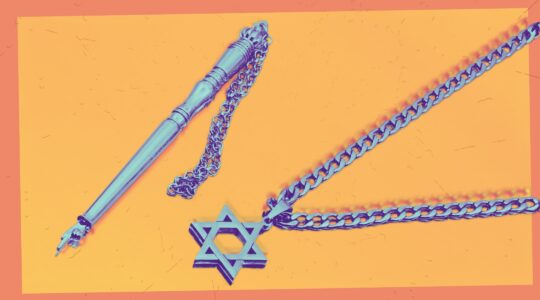The following is an excerpt from an article by Dr. Noam Stadlan published on JOFA’s Online Library. Please note that this excerpted section has been truncated. The full argument can be read in the original article published on JOFA’s website. To read the full article please click here.
Earlier this year, 7 highly respected rabbis authored a position paper on the ordination of women and on the possibility of women serving as clergy. Individually and collectively, they represent great learning, personal piety, and years of leadership. It would seem presumptuous for someone who will never achieve anything near their learning or stature to comment or critique. However, no one person or group has a monopoly on facts and logic. And, as will be demonstrated, Torah learning sometimes is not the sole or even dominant factor in a person’s opinion on these issues.
However, no one person or group has a monopoly on facts and logic.
The beginning of the OU paper on ordination for women contains three erroneous fundamental assumptions which impact the entire paper.
The first paragraph of the OU ‘psak’ on the ordination of women states: “some perceive limitations on women’s roles and titles as barriers to full involvement in the Orthodox community, while others view the lifting of traditional gender distinctions in ritual as representing a rejection of the mesorah. This tension pits egalitarianism, a central value of modernity, against a time-honored tradition that clearly speaks of equally valued, yet different, roles for men and women.”
‘Modern values’ have frequently provided the impetus for religiously desirable change.
The first error is setting up a false conflict between the mesorah and modernity. They seem to imply that changing something because of a ‘modern value’ is intrinsically wrong, and that something that is a ‘modern value’ is always, at least potentially, in conflict with the mesorah. As demonstrated, this is an incorrect understanding of the history of the mesorah and change. ‘Modern values’ have frequently provided the impetus for religiously desirable change.
The motive for semikhah can and from my experience should be seen as an expression of Masoretic values and the desire for maximal participation within halacha.
The second error is characterizing the desire to remove barriers as a manifestation of egalitarianism. One would have hoped and expected that poskim writing a paper with potential far reaching consequences would have expended great effort to ascertain all the facts. But it appears that they did not meet with any of the women obtaining semikhah nor any of their teachers. So the authors do not have any firsthand knowledge of the motivation of the women seeking semikhah. It is therefore grossly unfair and patronizing to ascribe motivations when the OU panel made no attempt to meet with any of the women involved. They have only their own projections of what they think are the motivations of the women. There is a less pejorative (at least in their eyes) alternative. Writing regarding R. Eliezer Berkovits, R. Shalom Carmy states: “(his) moral ends derive from internal Jewish sources….dissatisfaction with mainstream halachah regarding women is rooted, not in the pressures of contemporary egalitarianism, but in his judgment about biblical conceptions of justice[my emphasis].” The motive for semikhah can and from my experience should be seen as an expression of masoretic values and the desire for maximal participation within halacha.
R. Avraham Steinberg notes: “although strict Jewish law seems to require one to follow the order of precedencies cited in the Mishnah, the general practice and custom is otherwise.” The authors of the paper have adopted modern egalitarianism in this instance and shunted to the side the values mentioned in the Mishnah.
The third error is denigrating egalitarianism as something that is against the mesorah. The authors of the paper in fact state something quite egalitarian: “The Torah affirms the absolute equal value of men and women as individuals and as ovdei Hashem.” This is not the view of the Talmud. The Mishnah (Horiyot 13:1) states: “A man takes precedence over a woman, in matters concerning the saving of life…a Cohen takes precedence over a Levi….” Clearly the lives are not of equal value in the eyes of the Talmud. R. Avraham Steinberg notes: “although strict Jewish law seems to require one to follow the order of precedences cited in the Mishnah, the general practice and custom is otherwise.” The authors of the paper have adopted modern egalitarianism in this instance and shunted to the side the values mentioned in the Mishnah. Obviously erasing all differences between the genders, including those that are halachically mandated, is against halachah and tradition. But if one stays within halacha, is it against tradition? In fact our history, as documented above, is one of gradually erasing differences and/or eliminating previously mandated restrictions. Differences, or different restrictions, not because of specific halacha but just for the sake of having differences, or based on now discredited beliefs regarding abilities, appears to be an ancient value, not a traditional value.
Taking into account pre-existing beliefs
When there is a perceived conflict between ancient values and modern values, how can one decide which should be emphasized within the mesorah?
Given all of the above, how can/should one come to a position on the issues? I think that most of the time there is no significant conflict of values. But, when there is a perceived conflict between ancient values and modern values, how can one decide which should be emphasized within the mesorah? It is important for the advocates on all sides to try as best as possible to recognize and address their own potential biases. But ultimately, the quality and persuasiveness of the halachic arguments should help resolve which values to emphasize. While the burden of proof for change is on those who advocate for the change, the argument of ‘it is modern values and against mesorah’ has been shown to be invalid unless there is an illustration that it actually is against the mesorah on a halachic basis. And the halachic arguments presented in the paper are surprisingly weak (see the next section for a detailed analysis) considering the importance of both the topic and the authors. Prof. Marc Shapiro, for example, wrote that most Orthodox rabbis would admit privately that there is nothing halachically problematic with ordination for women.
Conclusion: Timeless or Ancient?
The authors of the OU paper wrote: “a commitment to follow the ethos of the Torah, in addition to the letter of the law, requires faith, commitment, and a willingness to embrace timeless principles – even when counter-cultural and incompatible with prevailing societal values.”
The question that needs to be answered is: What timeless principles are served by imposing restrictions on women that are not justified by a fair reading of the halacha and the sources?
I think everyone committed to Orthodox Judaism agrees with this statement. The major issue is distinguishing between timeless values and ancient values. As has been demonstrated, our mesorah over time, consciously or unconsciously, has addressed the perceived conflict between ancient values and modern values. Certainly there are modern values that have been appropriately rejected. Frequently however, ancient values have been rejected or, perhaps more accurately, assigned a reduced role of importance. And the modern values have been the impetus for the re-evaluation. As discussed in the Part II, the halachic arguments, taken at face value, are in favor of ordination for women. The values of eliminating unnecessary restrictions, encouraging full expression of potential to serve the community, fairness, and others also point towards ordination. There are specific halachic restrictions in place governing the behavior of men and women. The question that needs to be answered is: What timeless principles (or values) are served by imposing restrictions on women that are not justified by a fair reading of the halacha and the sources? Are they truly timeless and justifiably dominant in our mesorah, or just ancient?
Click here to read the full article!
Noam Stadlan, MD is Vice-Chairman, Department of Neurosurgery at NorthShore University Healthcare system, and sits on JOFA’s Board of Directors.
Posts are contributed by third parties. The opinions and facts in them are presented solely by the authors and JOFA assumes no responsibility for them.
If you’re interested in writing for JOFA’s blog contact shira@jofa.org. For more about JOFA like us on Facebook or visit our website.
The New York Jewish Week brings you the stories behind the headlines, keeping you connected to Jewish life in New York. Help sustain the reporting you trust by donating today.




